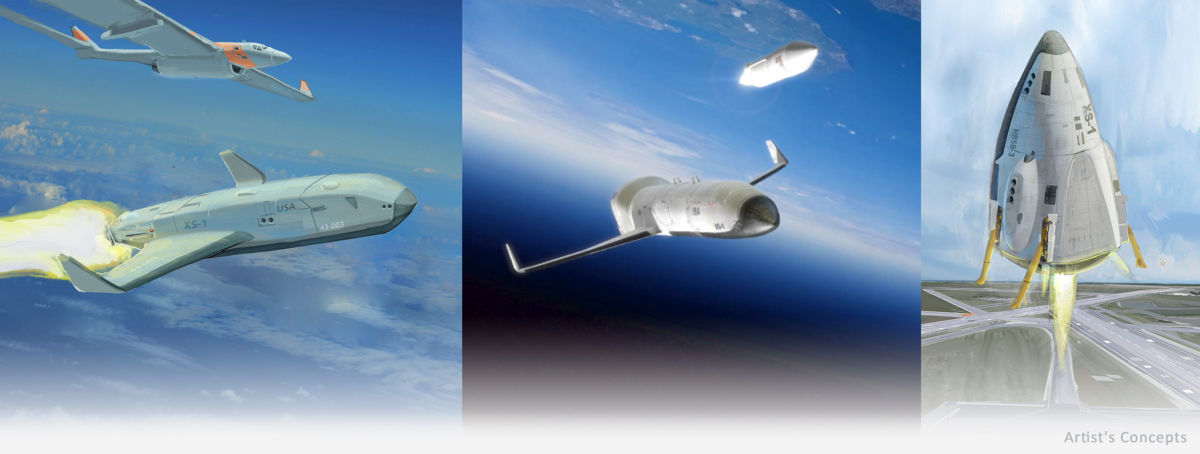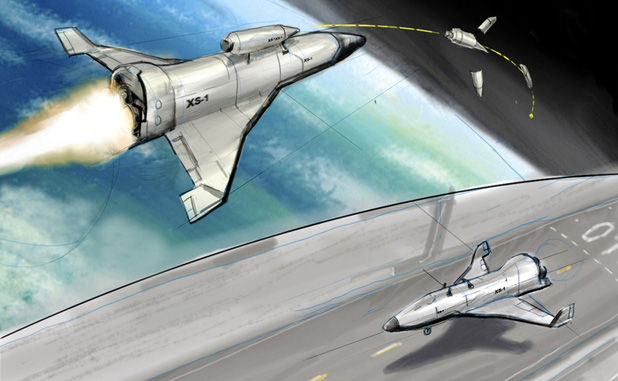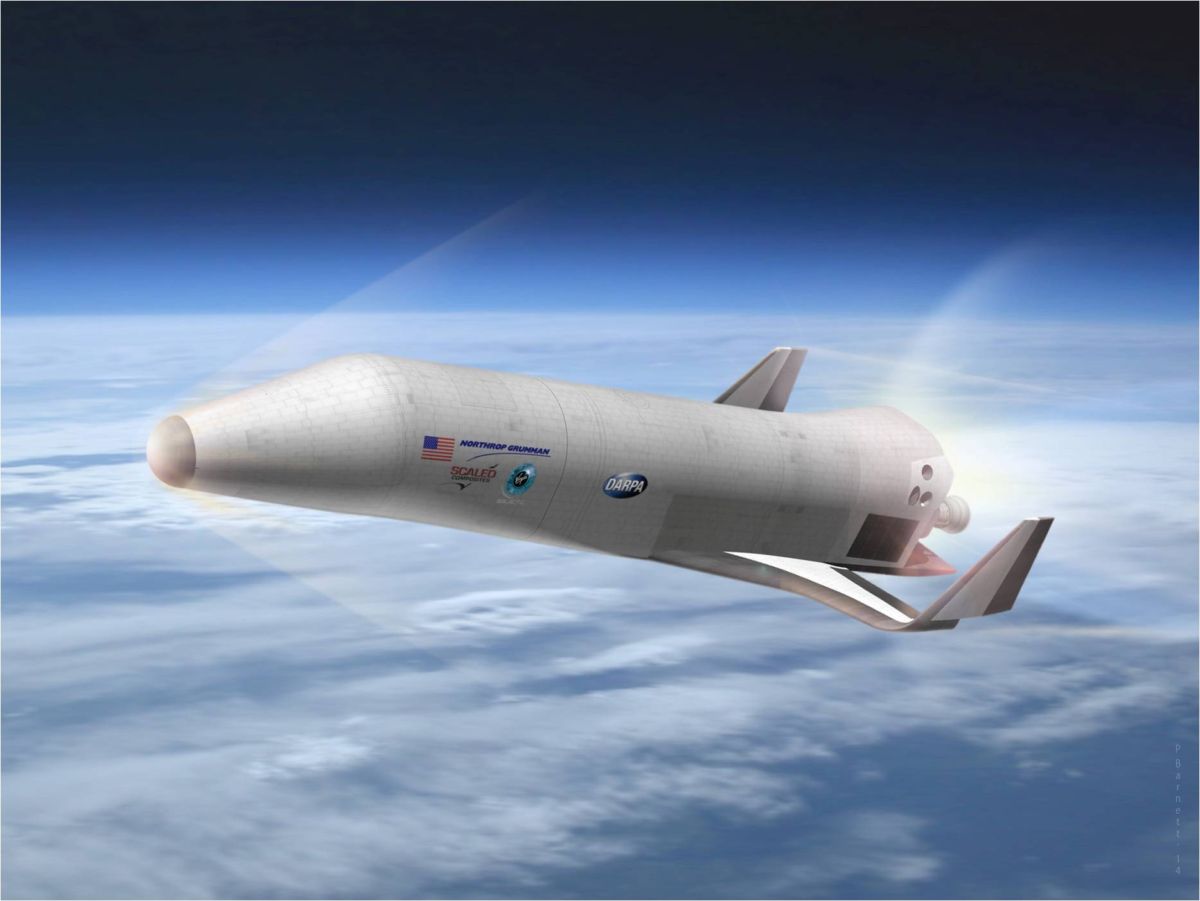
US Military Is Close to Selecting Builder for XS-1 Space Plane

The U.S. military's Defense Advanced Research Projects Agency (DARPA) will soon select a company to build its robotic XS-1 space plane, according to media reports.
DARPA has entered the final stages of the selection process, in which it will ultimately choose one company to construct the space plane, Air Force Magazine reported last week.
In Phase 1 of the XS-1 program, DARPA awarded prime contracts to three companies, each of which will work with a commercial launch provider: Boeing (working with Blue Origin), Masten Space Systems (working with XCOR Aerospace) and Northrop Grumman (working with Virgin Galactic). [DARPA's Experimental XS-1 Space Plane in Pictures]
However, the Phase 2 contractor won't necessarily be chosen from the three Phase 1 participants, according to the Air Force Magazine report.

Technical goals
The XS-1 space plane will consist of a reusable booster vehicle and an expendable upper stage. According to the DARPA website, the XS-1 program has four primary technical goals:
- Fly 10 times in a 10-day period, to demonstrate efficient, aircraft-like access to space.
- Fly fast enough to allow the use of a small (and therefore cheap) expendable upper stage.
- Launch a 900-lb. to 1,500-lb. (408 to 680 kilograms) payload, to demonstrate a launch capability that could support both military and commercial missions. The same XS-1 vehicle could eventually also launch future payloads in excess of 3,000 lbs. (1,360 kg), by using a larger upper stage.
- Reduce the cost of access to space to about $5 million per flight for payloads of at least 3,000 lbs.
"Structures made of advanced materials, cryogenic tanks, durable thermal protection, and modular subsystems would make possible a vehicle able to launch, fly to high speeds and then land in a condition amenable to rapid turnaround and launch with the next payload. Reusable, reliable propulsion would also be essential for a low-cost and recurring flight capability," DARPA officials wrote on the agency's website last year.

Flight by 2020?
If everything goes according to plan, the XS-1 could get off the ground just a few years from now.
Get the Space.com Newsletter
Breaking space news, the latest updates on rocket launches, skywatching events and more!
"After downselect, a critical design review would take place in 2018, and a series of flights could be made as early as 2020," Air Force Magazine's John Tirpak wrote in his story last week. "One of the program requirements is to fly 10 suborbital or orbital missions in as many days, achieving space operations with ‘aircraft-like’ frequency, DARPA said. If successful, a 'public-private partnership' model of operating the vehicles could be adopted, DARPA documents show."
Space.com contacted Jess Sponable, program manager of XS-1 at DARPA's Tactical Technology Office, about the Air Force Magazine report and projected timelines for XS-1 milestones.
"Absolutely, we are moving forward. But we never say so until it is a done deal," Sponable said.
Leonard David is author of "Mars: Our Future on the Red Planet," published by National Geographic. The book is a companion to the National Geographic Channel series "Mars." A longtime writer for Space.com, David has been reporting on the space industry for more than five decades. Follow us @Spacedotcom, Facebook or Google+. This version of this story was posted on Space.com.
Join our Space Forums to keep talking space on the latest missions, night sky and more! And if you have a news tip, correction or comment, let us know at: community@space.com.

Leonard David is an award-winning space journalist who has been reporting on space activities for more than 50 years. Currently writing as Space.com's Space Insider Columnist among his other projects, Leonard has authored numerous books on space exploration, Mars missions and more, with his latest being "Moon Rush: The New Space Race" published in 2019 by National Geographic. He also wrote "Mars: Our Future on the Red Planet" released in 2016 by National Geographic. Leonard has served as a correspondent for SpaceNews, Scientific American and Aerospace America for the AIAA. He has received many awards, including the first Ordway Award for Sustained Excellence in Spaceflight History in 2015 at the AAS Wernher von Braun Memorial Symposium. You can find out Leonard's latest project at his website and on Twitter.









